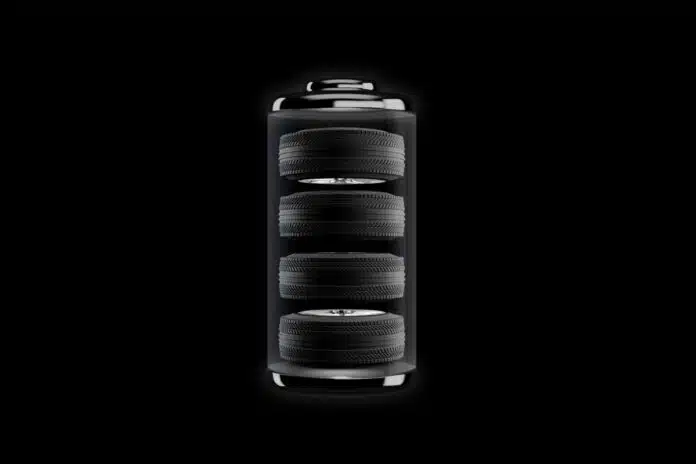
By Ashwini Sakharkar 6 Nov, 2024
Collected at: https://www.techexplorist.com/machine-learning-helps-find-promising-compositions-sodium-ion-batteries/91978/
Energy storage plays a crucial role in emerging sustainable technologies, such as electric vehicles and renewable energy production. While lithium-ion batteries (LIBs) currently dominate the market, lithium is a scarce and costly element, leading to challenges in economic viability and supply stability. To address these challenges, researchers worldwide are investigating new battery types that utilize more abundant materials.
Sodium-ion (Na-ion) batteries, which operate using sodium ions as energy carriers, offer a promising alternative to LIBs due to the widespread availability of sodium, enhanced safety, and potentially reduced costs. Specifically, sodium-containing transition-metal layered oxides (NaMeO2) serve as effective materials for the positive electrode in Na-ion batteries, providing impressive energy density and capacity.
However, the number of multi-element layered oxides made up of different transition metals complicates the process of identifying the optimal composition, making it both challenging and time-consuming. Even small adjustments in the selection and ratio of these metals can lead to significant shifts in crystal structure and battery performance.
In light of these challenges, a study led by Professor Shinichi Komaba, alongside Ms. Saaya Sekine and Dr. Tomooki Hosaka from Tokyo University of Science (TUS) in Japan, in collaboration with Chalmers University of Technology and Professor Masanobu Nakayama from Nagoya Institute of Technology, has utilized machine learning to enhance the search for potentially effective compositions. This innovative approach could potentially revolutionize the field and pave the way for superior energy storage solutions.
The team aimed to automate the evaluation of elemental compositions in various NaMeO2 O3-type compounds. To achieve this, they initially compiled a database containing 100 samples from O3-type sodium half-cells featuring 68 different compositions, collected over an 11-year period by Komaba’s group.
“The database included the composition of NaMeO2 samples, with Me being a transition metal like Mn, Ti, Zn, Ni, Zn, Fe, and Sn, among others, as well as the upper and lower voltage limits of charge-discharge tests, initial discharge capacity, average discharge voltage, and capacity retention after 20 cycles,” explains Komaba.
Utilizing this extensive dataset, the researchers developed a model that integrated multiple machine learning algorithms and Bayesian optimization for efficient exploration. The objective of this model was to decode the relationships between vital properties like operating voltage, capacity retention (lifetime), and energy density in NaMeO2 layered oxides while predicting the ideal elemental ratios to harmonize these properties optimally.
Upon analyzing the findings, the team determined that the model indicated Na[Mn0.36Ni0.44Ti0.15Fe0.05]O2 as the ideal composition for attaining the highest energy density, a crucial attribute in electrode materials. To confirm the model’s predictive accuracy, they synthesized samples with this composition and assembled standard coin cells to conduct charge-discharge tests. The observed values were largely in agreement with the predicted outcomes, demonstrating the model’s accuracy and its potential for discovering new battery materials.
“The approach established in our study offers an efficient method to identify promising compositions from a wide range of potential candidates,” remarks Komaba, “Moreover, this methodology is extendable to more complex material systems, such as quinary transition metal oxides.”
Employing machine learning to uncover promising research paths is an emerging trend in materials science. This is because it can significantly decrease the number of experiments and the duration needed to screen new materials.
The approach outlined in this study could hasten the advancement of next-generation batteries, which have the potential to transform energy storage technologies universally. This encompasses not just renewable energy production and electric or hybrid vehicles but also consumer devices like laptops and smartphones.
Additionally, successful implementations of machine learning in battery research can act as a model for material development in other areas, potentially speeding up innovation throughout the wider materials science field.
“The number of experiments can be reduced by using machine learning, which brings us one step closer to speeding up and lowering the cost of materials development. Furthermore, as the performance of electrode materials for Na-ion batteries continues to improve, it is expected that high-capacity and long-life batteries will become available at lower cost in the future,” concludes Komaba.
Journal reference:
- Saaya Sekine, Tomooki Hosaka, Hayato Maejima, Ryoichi Tatara, Masanobu Nakayama, and Shinichi Komaba. Na[Mn0.36Ni0.44Ti0.15Fe0.05]O2 predicted via machine learning for high energy Na-ion batteries. Journal of Materials Chemistry A, 2024; DOI: 10.1039/D4TA04809A

Leave a Reply